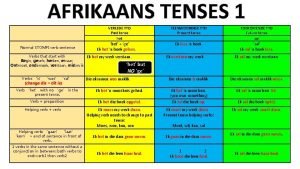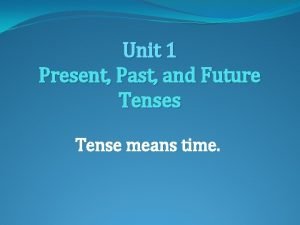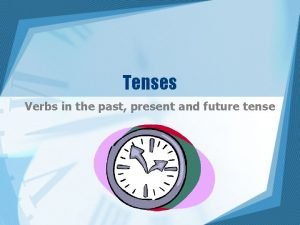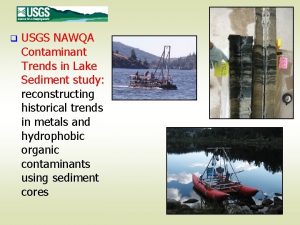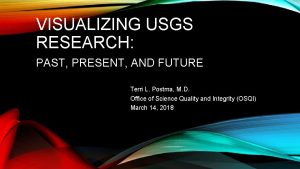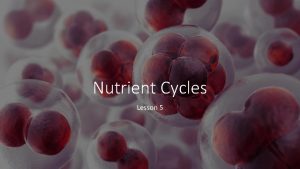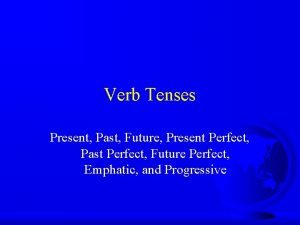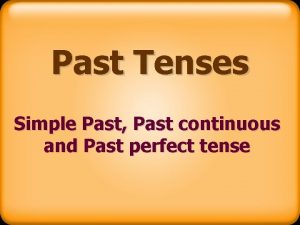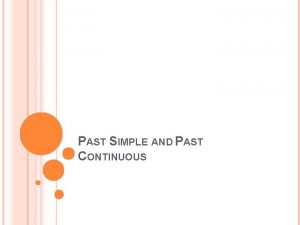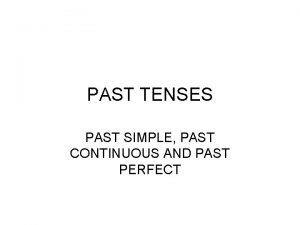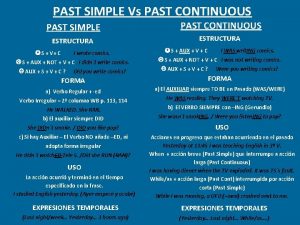NAWQA Nutrient Synthesis Past Present and Future USGS
































- Slides: 32

NAWQA Nutrient Synthesis Past, Present, and Future USGS Workshop on Nutrient Processes in the Upper Mississippi River Basin UMESC, La. Crosse, WI March 25 – 26, 2002 Jeff Stoner Dave Mueller Norm Spahr Tom Nolan Barb Ruddy Mark Munn Richard Alexander

NAWQA Past 1992 - 2000 • Status of streams and rivers • Status of ground water • Relations to land use to water quality Streams (NO 3+NO 2, NH 4+Org. N, NH 4, TN, DP, OPO 4, TP, DOC, SOC) Ground water (NO 3+NO 2, NH 4, OPO 4, DOC) Stream habitat, basin and well characteristics, soils, geology, land use and cover, chemical use

Center Creek - Missouri - 760 km 2 350 7 300 6 250 5 200 4 150 3 100 2 50 1 0 0 O N D J F M AM J J A S O N D J FM AM J J A S Water years 1994 -95 Predicted Nitrate (mg / L) Streamflow (m 3/s) Sample

Total Phosphorus in Streams Agricultural Areas

Total Nitrogen in Streams Agricultural Areas

Total Nitrogen in Large Rivers Mixed Land Use

Mean-Annual Nitrogen in Streams NAWQA 25 -50 -75 th percentiles (1993 -98) 75 th 113 sites 50 th 38 25 th 48 169

Extrapolating Nitrate in Ground Water Calibrated Logistic-Regression Model

Nitrate Probability in Shallow Ground Water To be published in ES&T, B. T. Nolan and others, 2002

OVERALL VERIFICATION OF NO 3 MAP (1991 AND 1994 WELLS)

Influence of Land Use on Water Quality and Aquatic Biology in Small Streams and Ground Water UMIS NAWQA Study Unit

Streams Ground Water

Nutrient yields are largest in streams draining agricultural areas

Interrelations Between Physical, Chemical and Biological Variables, even for Large Rivers, may best be Explained by Study-Unit Investigators Sediment Nitrite + nitrate Phosphorus Chlorophyll a

Major Tributaries Have Opposite Influences on Main Stem TN and TP Concentrations

Nutrient Questions from UMIS NAWQA Sources and Transport of Agricultural Chemicals in Streams and Ground Water – What is the source of phosphorus/sediment in the Minnesota River? Bank erosion? Streambed erosion? – How do differing agricultural practices influence the sources and transport rates of agricultural chemicals in streams and ground water? – What is the relative contribution of contaminants from ground water, land surface runoff, and tile drains? Effects of Nutrient Enrichment on Agricultural Streams – How do management practices influence the rate of nutrient assimilation in streams? – Does nutrient enrichment contribute to the presence of toxic algae in agricultural streams?

NAWQA Present • Status of streams and ground water (add data from study units begun in 1997) • Nutrient relations to land use and seasons • Final summary results of the Midwest synoptic for algal-nutrients relations in streams (S. D. Porter) • Planning the next 10 -yr. cycle

Seasonal Total Nitrogen in Streams Agricultural Areas Seasons Winter (January-March) Spring (April-June) Summer (July-September) Fall (October-December) Undetermined Combinations of colors indicate multiple seasons of high concentrations, ex. winter-spring

NAWQA Future 2001 - 2011 • Reduced to 42 study units. • Status of streams and ground water continued. • Changes in water quality (8 – 12 yr. ) and why. • Better explain relations to land use and biogeochemical processes.

Start Year

Stream Sites in the NAWQA Trends Program Compare: 505 to 145 sites; 1 st to 2 nd decade

NAWQA Trend Sites on Large Rivers (2001 – 2010+)

NAWQA Trend Sites on Targeted Land Use (2001 – 2010+)


Nutrient Enrichment Effects Topic (NEET) Determine how biological communities and processes respond to varying levels of nutrient enrichment in agricultural streams from contrasting environmental settings. 1. Define the relations between biological communities and nutrient conditions in streams. 2. Describe how biological processes and nutrients interact at the watershed and reach scale. 3. Determine whether the relations between biological communities and nutrient conditions can be extrapolated to unmonitored areas.

USEPA Research Needs • • • Periphyton chlorophyll measurements Algal growth requirements Stream models that include periphyton Stream bank, riparian zone, and denitrification Dissolved oxygen and p. H amplitude Community effects (ecoregions, metrics, indicator taxa) • Fluvial geomorphology as a controlling factor • Whole stream enrichment studies • Seasonal relationships between nutrient and biomass

Solar Land Use Nutrients Sediment Pesticides SW flux Wooded riparian corridors Water clarity Shading Algal Seston Immigration Benthic Algae Nutrient uptake GW-SW relations Soil Permeability Filter Feeders Invertebrates Drift GW flux Habitat -cover-food DO, p. H, SOC relations Export Scrapers Collectors Fish & Wildlife

NEET Stratification

Factors used to define hydrologic landscape regions Precip – Potential evapotranspiration Aquifer permeability Percent sand Topography

Hydrologic landscape regions • A statistical clustering (20) of hydrologically important landscape and climate factors • Among-region variability in the factors is maximized and within-region variability is minimized

Proposed data collection scheme • Stratified by hydrologic landscape • ~ 28 basins (avoid nesting) • Constrain flow • Large nutrient gradient • Measure stream habitat

Summary NAWQA Nutrients Synthesis • Past – Large and consistent nutrients data base for streams and ground water at multiple scales. – Relations to broad categories of land use. • Future – Continue status of nutrients conditions and improve confidence in statistical correlations to land use on other physical factors. – A consistent look at time trends and why. – Improve understanding of biogeochemical processes within streams and near hyporheic zones (NEET).
 Nawqa
Nawqa Transport medium examples
Transport medium examples Future simple present continuous
Future simple present continuous Past simple future
Past simple future Present simple, past simple, future simple
Present simple, past simple, future simple Simple future past
Simple future past Future perfect and future continuous examples
Future perfect and future continuous examples Future perfect e future continuous
Future perfect e future continuous Past continuous past simple past perfect
Past continuous past simple past perfect Past present future continuous tense
Past present future continuous tense Form of future tense
Form of future tense Past and future tense verbs
Past and future tense verbs Examples of present tense in afrikaans
Examples of present tense in afrikaans Unit 1 tenses present forms
Unit 1 tenses present forms Simple present past and future
Simple present past and future Simple present, simple past, simple future
Simple present, simple past, simple future E marketing past present and future
E marketing past present and future Present simple and continuous for future
Present simple and continuous for future Present perfect past perfect and past simple
Present perfect past perfect and past simple Spend spend spend
Spend spend spend Present tense to past tense
Present tense to past tense Past simple future simple
Past simple future simple Present continuous to sleep
Present continuous to sleep Cortar present perfect
Cortar present perfect Past of be
Past of be Past continuous
Past continuous Past present future in japanese
Past present future in japanese List of 23 helping verbs
List of 23 helping verbs Helping verbs list
Helping verbs list Present past future tense example
Present past future tense example Future tense run
Future tense run Past present future
Past present future Jesus past present future
Jesus past present future












